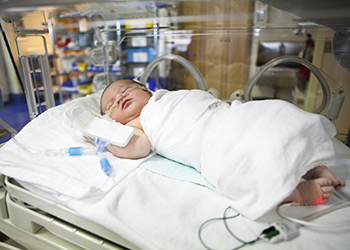
The issue
Although the chances of survival for at-risk babies in developed countries have significantly increased over the past 30 years, they continue to be at-risk for developmental delays due to biological and environmental risk factors.
Historically, studying at-risk babies has proved challenging for researchers: sample sizes were small, it was difficult to recruit and maintain samples over time and there was a lack of socio-demographic and medical heterogeneity among the samples.
Faced with these challenges, a team of researchers led by Dr Hillel Goelman at the University of British Columbia, used linked administrative databases to carry out a retrospective, population-based study of 71,698 children born in British Columbia between January 1996 and December 1997 and compare the group of children who were treated in Neonatal Intensive Care Units (NICU) with the group of children who were not.
The project, the first in BC to examine a province-wide population of children through administrative databases, was funded by the Government of Canada Social Development Partnerships Program.
Data sources linked
- Medical Services Plan (BC Ministry of Health)
- Medical Services Plan Registration & Premium Billing (BC Ministry of Health)
- Hospital Separations (BC Ministry of Health)
- Births and Registry files (BC Vital Statistics Agency)
What did we learn?
At birth there are already marked differences between NICU and non-NICU children in British Columbia. In addition to confirming existing knowledge around low birth weight and prematurity, the study found that:
- A significantly higher number of NICU children are likely to live in urban settings.
- A significantly higher number of NICU children are likely to be from a lower socioeconomic background.
- Mothers of NICU children are significantly more likely to be unmarried.
- NICU children are significantly more likely to be a twin or higher-order multiple birth.
> download paper | 230kb pdf
> download maps | 329kb pdf
Increasing the gestational age of a newborn baby by one week reduces the length of a NICU stay by 3.3 days.
In the period studied here, there were 2704 babies born prematurely who needed NICU treatment. If one day in NICU costs $1,000*, adding just one week to each child’s gestational age would translate into a cost avoidance of nearly 9 million dollars.
* Gilbert W.M. Obstet Gynecol (2003); 102(3): 488-92.
Making a difference
Further research using this full birth cohort will examine NICU and non-NICU children’s access and utilisation of health services. The study will also look at the extent to which geography plays a role in hospitalisation patterns and the use of other medical and health services.
As part of a larger project linking to education data, researchers will also examine whether NICU referral impacts upon educational outcomes in elementary school.
